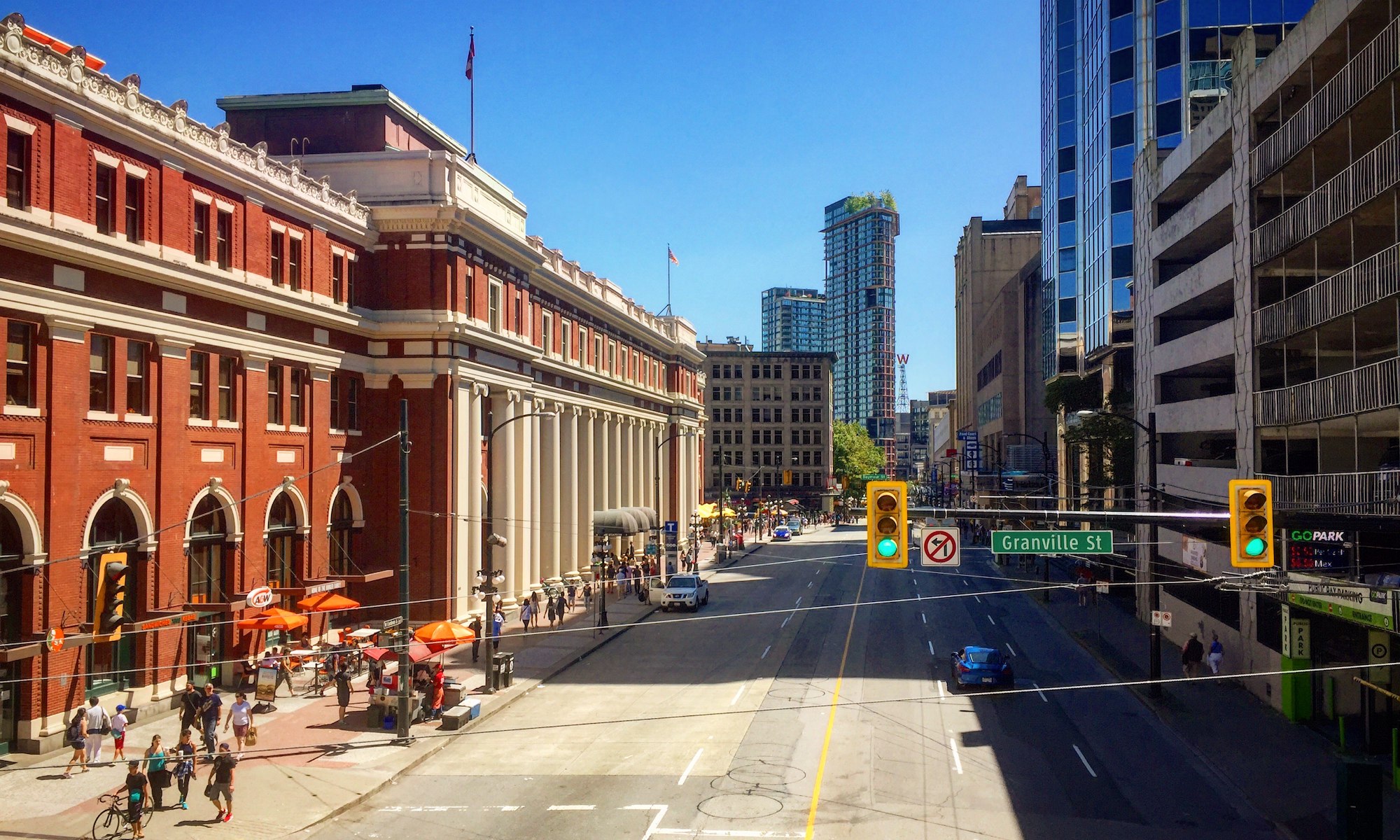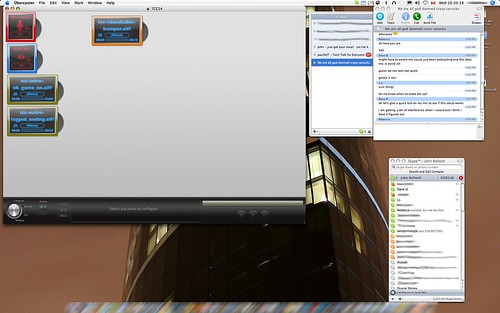I’ve been thinking of doing a more, detailed post about how a typical episode of The Crazy Canucks comes together, but I’m going to make a simple list of all the gear we use to make it work.
- Skype – Without this, we have no podcast. With Alanah doing her thing on the island, Dave on the north shore, and the rest of us in Vancouver, this is the crucial piece of software that ties us together. This also allows us to bring on any other guests that also use Skype on their PC.
- Ubercaster – This is the recording software that I prefer to use. I’ve watched Ubercaster go through the ropes of development and been impressed with every step of the way. It also has a built-in function to record Skype conversations, making it even easier to record our conference call. It is worth the time to setup templates for your podcast because it makes it very easy to fire up the program, open a template, conference call on Skype, and you’re rolling.
- Levelator – Due to the various setups that everyone has and the fact that Skype is really difficult to control audio input levels on, I always export the vocals first to run them through Levelator. You might not get the best audio quality from our “Voice Over IP Hot Stove”, but at least you’ll be able to hear all of us.
- Apple iMac – This is the work horse that ties together our recording hardware and software. Speaking of…
- Behringer Eurorack UB1204FX-PRO 8-channel Mixer – With anything you do in the world of recording and/or broadcasting, you can never have enough inputs. Most podcasters don’t need this much, but I’m a geek. You never know what you’ll wanna try to do, and this mixer has a slew of other nice features as well.
- Shure SM7 and Behringer XM2000S microphones – I have one of each of these, and perhaps a bit more of overkill for the average podcaster. However, I’ve been doing the radio thing for ten years now. I have accumulated a collection of toys.
- iPod nano (2nd gen) + Belkin TuneTalk Stereo – This is what I’m using to do mobile recordings these days. The quality is really surprising, and for podcasting, you can’t ask for more than something that sounds good as well as being small and very portable. Records stereo WAV’s at 44.1Khz as well as mono. I also put a standard microphone wind screen over the Belkin add. Additionally, I taped down the small switch on it because it had enough movement on it that it caused a slight rattle in the recordings.
- FeedBurner – We push our RSS feed through their service simply because they are really good at what they do.
- WordPress + PodPress – This is the CMS/blogging platform that we use to publish TCC episodes. PodPress is a plugin for WP that we use on the site that allows people to listen to our podcasts from the website as well as download them or make them available in our RSS feed.
Making it all come together has taken me about a year and a half to get efficient at. Every episode has something different to it, and I’m very much a fly by the seat of your pants editor. As the recording is happening, I can envision how I’ll go back and edit something, make a mental note as to where it was in terms of time of the epsiode, and get the podcast encoded and uploaded in about 20-30 minutes after we are finished recording. After that, it’s just a matter of making the blog post and publishing it to the world.




